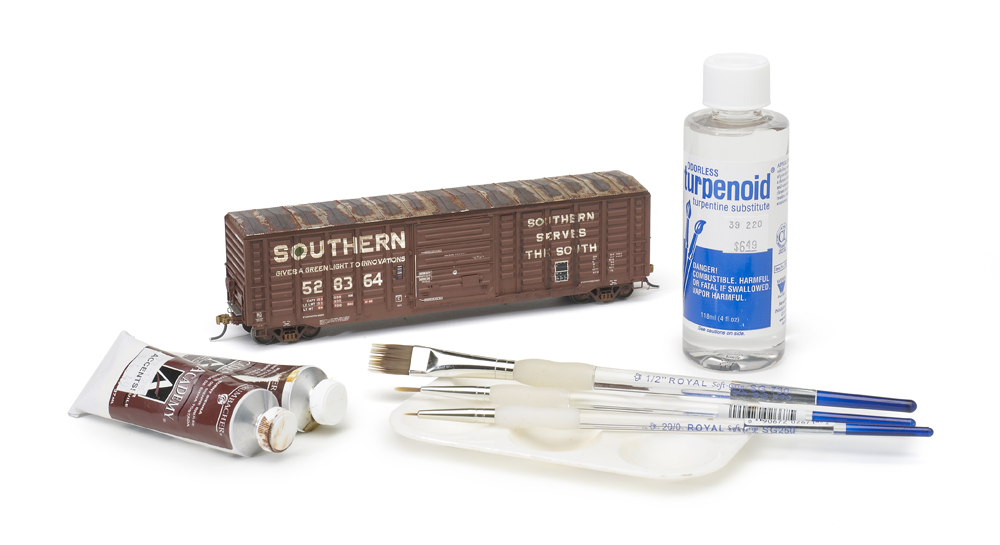
Weathering with artist’s oils: Artists’ oils make it easy to apply weathering washes and simulate rust patches, which I did on this HO scale ExactRail boxcar. First, I put some burnt umber on each body panel and on the door. Then I touched the paint with a 1 ⁄2″-wide paintbrush soaked with Turpenoid (an odorless turpentine […]
Read More…
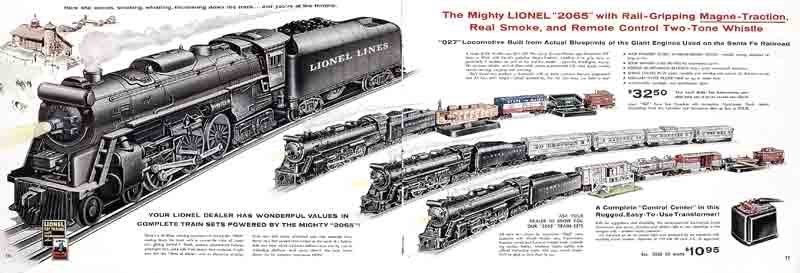
The Lionel 2065 Hudson is not uncommon, and it isn’t particularly valuable. What makes it so important to me is all that I remember because of it. This middle-of-the-road Lionel steamer from my youth has left me with so many wonderful memories. I was born in January 1953, and my brother Steve came along 4 […]
Read More…
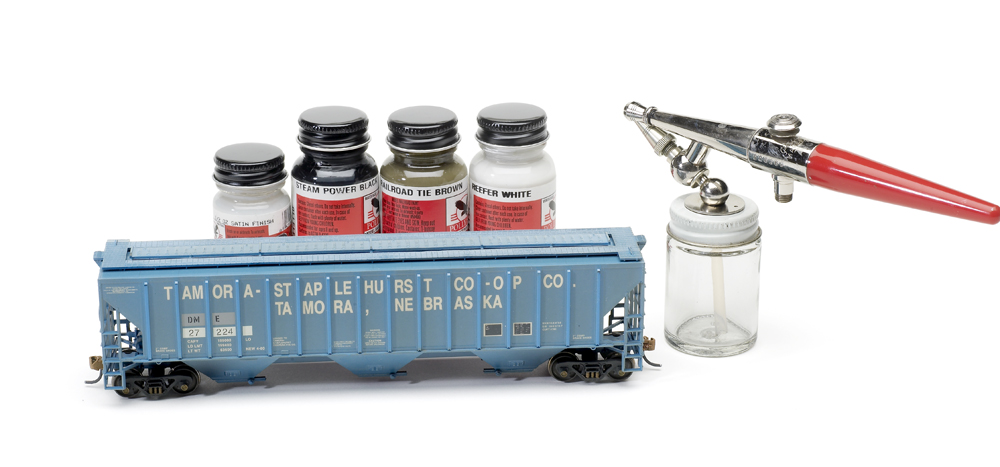
Weathering with an airbrush: If you’re looking to give your freight cars and locomotives a general coat of grime in relatively little time, try using an airbrush and thinned acrylic paints. My first step on this Athearn HO scale 54-foot covered hopper kit was to spray the entire car with thinned Polly Scale Reefer White […]
Read More…
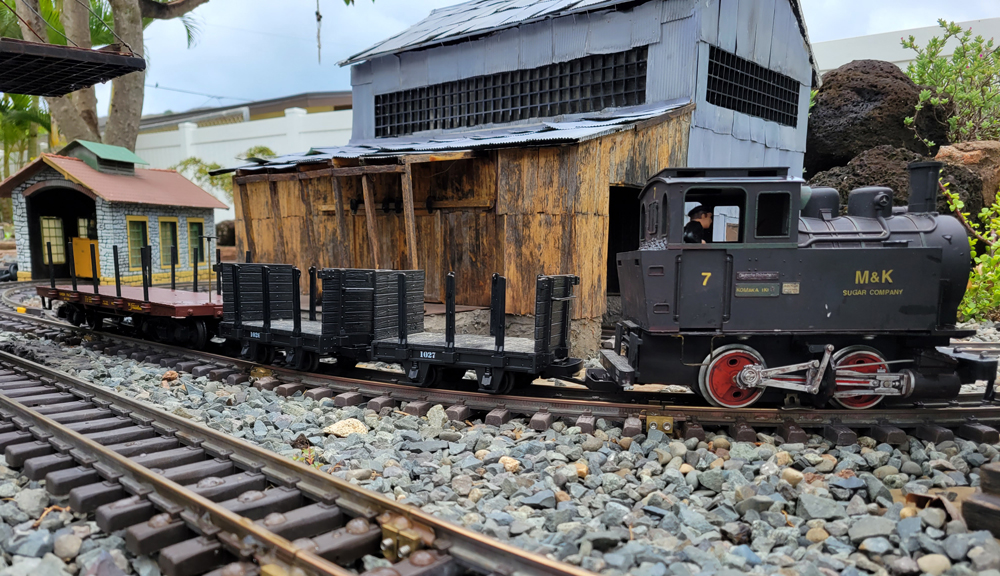
Garden railroading in Hawaii: In late 2013, my wife set in motion a scheme that eventually became the Oberammergau, Ogden & Olomana Railroad – the Triple O. A few books, a GR subscription, and a year of study later, and we broke ground on what has become a family project to bring a stylized piece […]
Read More…
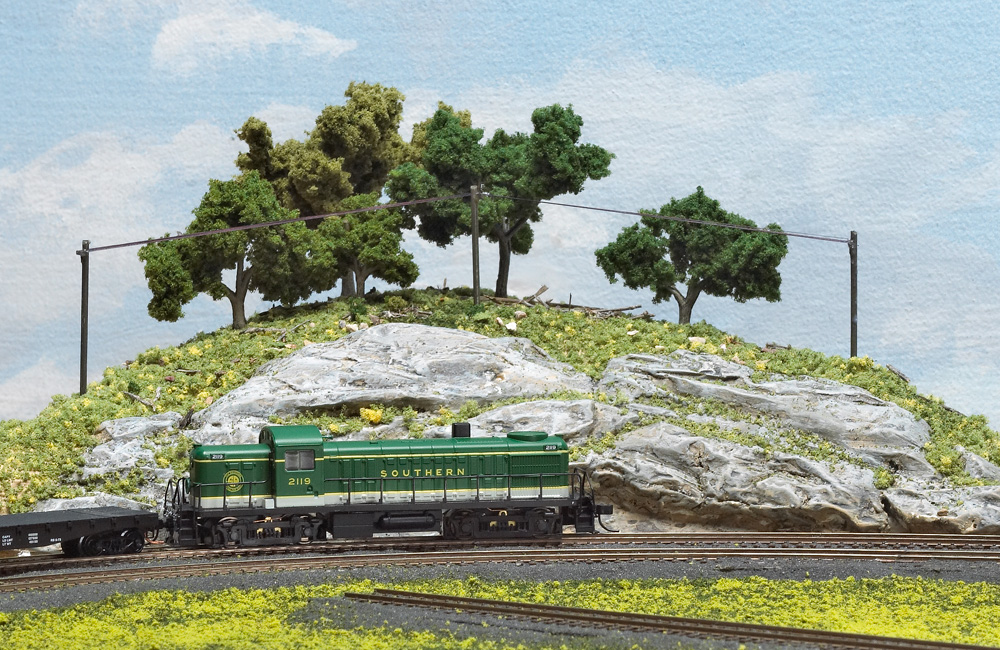
Unless you’re modeling a flatland railroad – and maybe even if you are – your layout needs rocks. Building a level right-of-way through the ups and downs of natural terrain involves cuts and fills, exposing bare rock. A railroad with a mountainous setting, be it Appalachian or Rocky, calls for even more rocks. Between foam […]
Read More…

Polar Express layout tips: We at CTT had a lot of fun building our recent Polar Express layout. Despite building several project layouts over the years, I learned new techiques and ideas during the five days we spent working on this project. Perhaps one of these tips will inspire you too. Happy holidays! Polar Express […]
Read More…
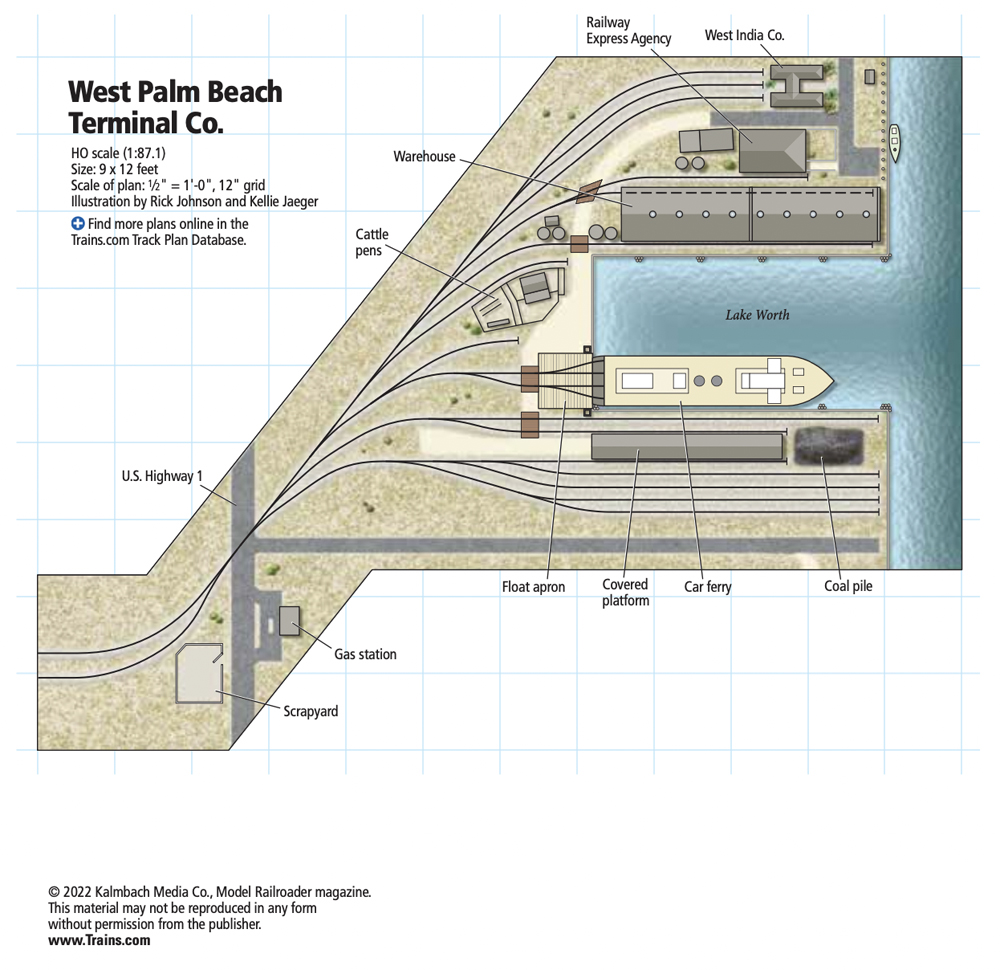
Facts & features Name: West Palm Beach Terminal Co. Scale: HO (1:87) Size: 9-0′ x 12-0′ Prototypes: West Palm Beach Terminal Co. Locale: East coast of Florida Era: Late 1950s Style: Module Mainline run: None Minimum radius: 1821″ Minimum turnout: no. 5 Maximum grade: None Benchwork: Hollow-core doors Height: 45″ Roadbed: Cork sheet Track: Micro engineering […]
Read More…
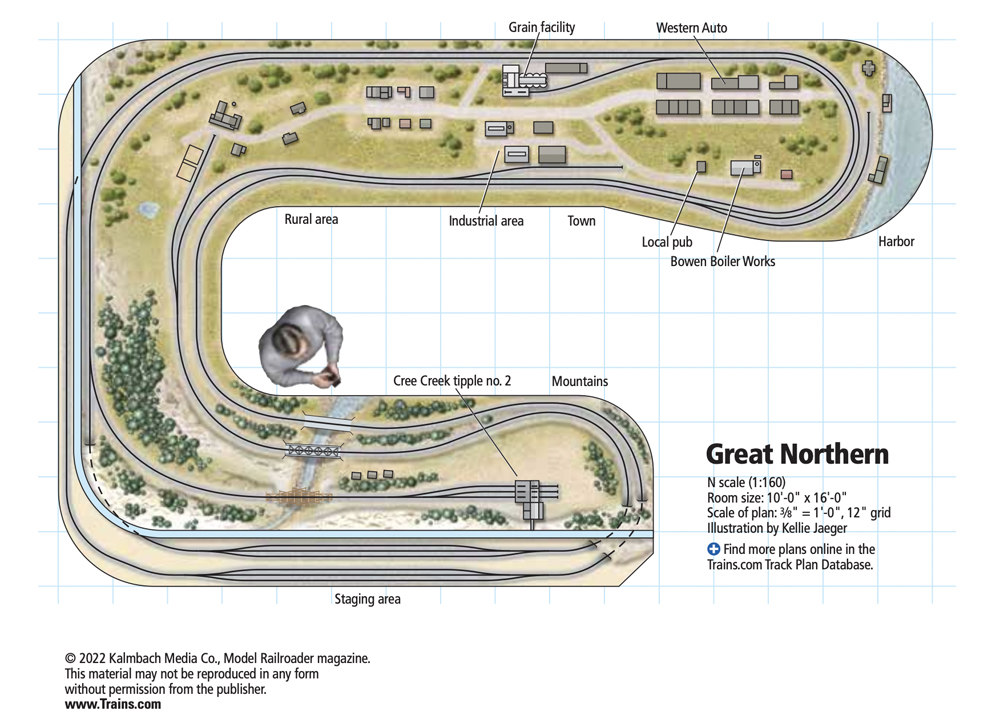
Facts & features Name: Great Northern Scale: N (1:160) Size: 10-0′ x 16-0′ Prototypes: Freelanced Locale: Pacific Northwest Era: Mid-1960s Style: Walk-in Mainline run: 86 feet Minimum radius: 15″ Minimum turnout: no. 6 Benchwork: Modified L-girder Height: 46″ Roadbed: Commercial foam roadbed Track: Micro Engineering code 55 (main), Peco code 80 (staging) Scenery: Extruded-foam insulation […]
Read More…
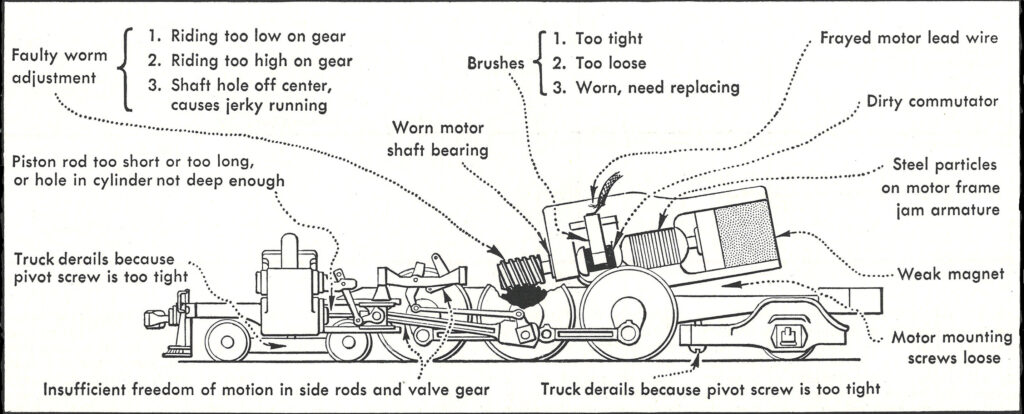
Model steam locomotive troubles and how to fix them: Compiled by John Page, Editor of the Model Railroader, in 1952. Many of the tips here address problems with open-frame motors and direct-current operation. However, many of the same gear and wheel-quartering issue still apply to locomotive models in any scale and manufacture. Model steam locomotive […]
Read More…
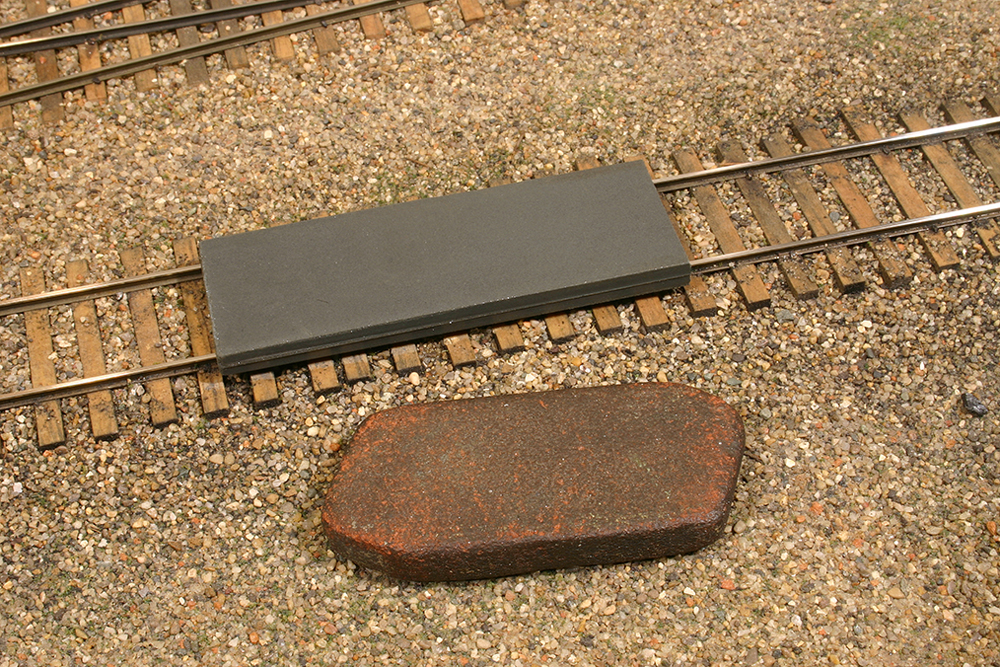
In this article we’ll look at five ways to clean track. If you want to get a lively debate started amongst model railroaders, ask them the best way to clean track. Some prefer abrasive blocks, like the Bright Boy, while others turn to any number of cleaning solvents, homemade or commercial cleaning cars, or off-the-shelf […]
Read More…
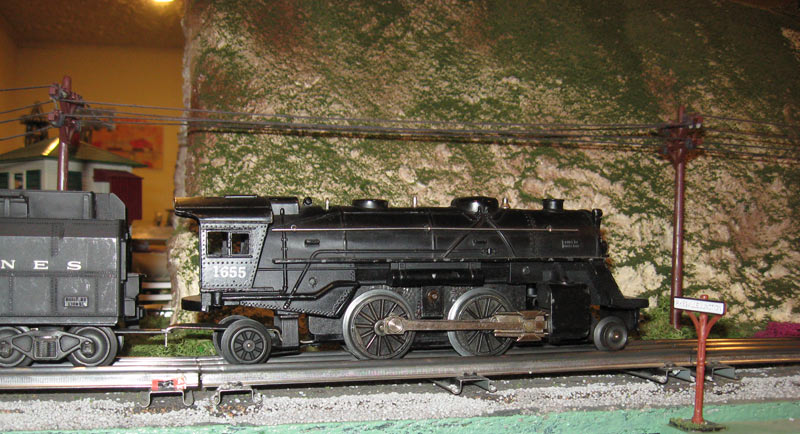
The Lionel Scout locomotive has been for many an entry point to the toy train hobby. For me, it was the little engine that got me back into it. I’ve been in the toy train hobby for many years and have amassed an impressive collection of Lionel’s postwar F3s, Berkshires, Turbines, and other locomotives. But […]
Read More…
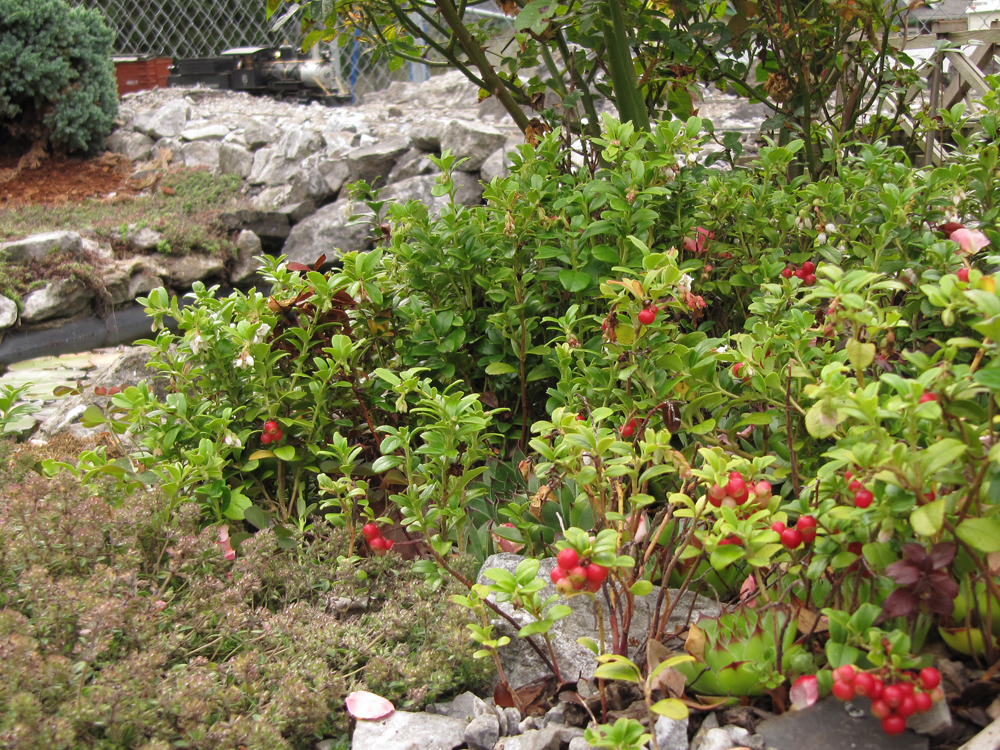
Lingonberry or mountain cranberry Common name: Lingonberry, mountain cranberry Latin name: Vaccinium vitis-idaea Plant type: Perennial USDA Hardiness Zones: 2-6 Cultural needs: Moist, well-drained, very acidic soil, full sun to partial shade Plant size: 4-12″, depending on variety and culture Hello, Zone 2 gardeners! This naturalized Scandinavian import is hardy to -50°F! Mountaincranberry, […]
Read More…












